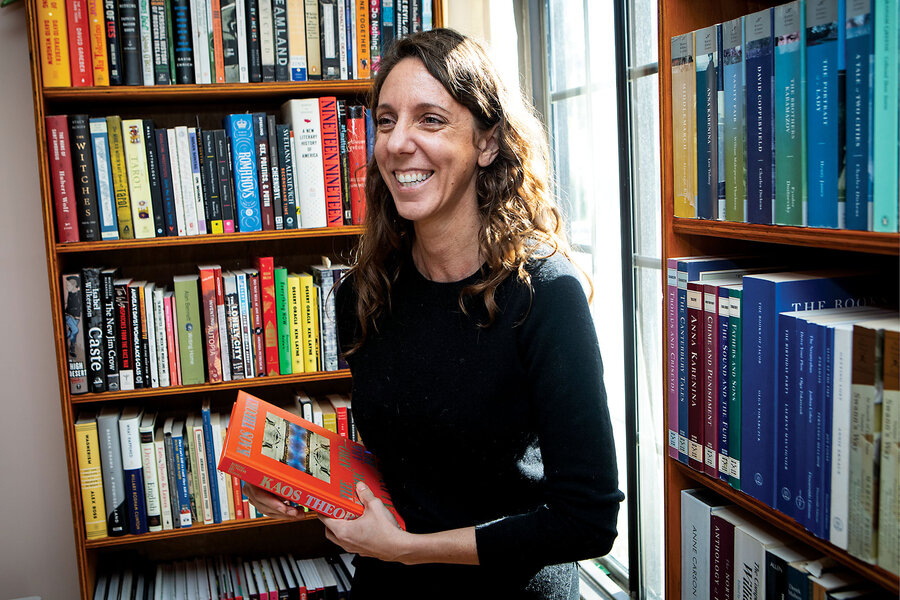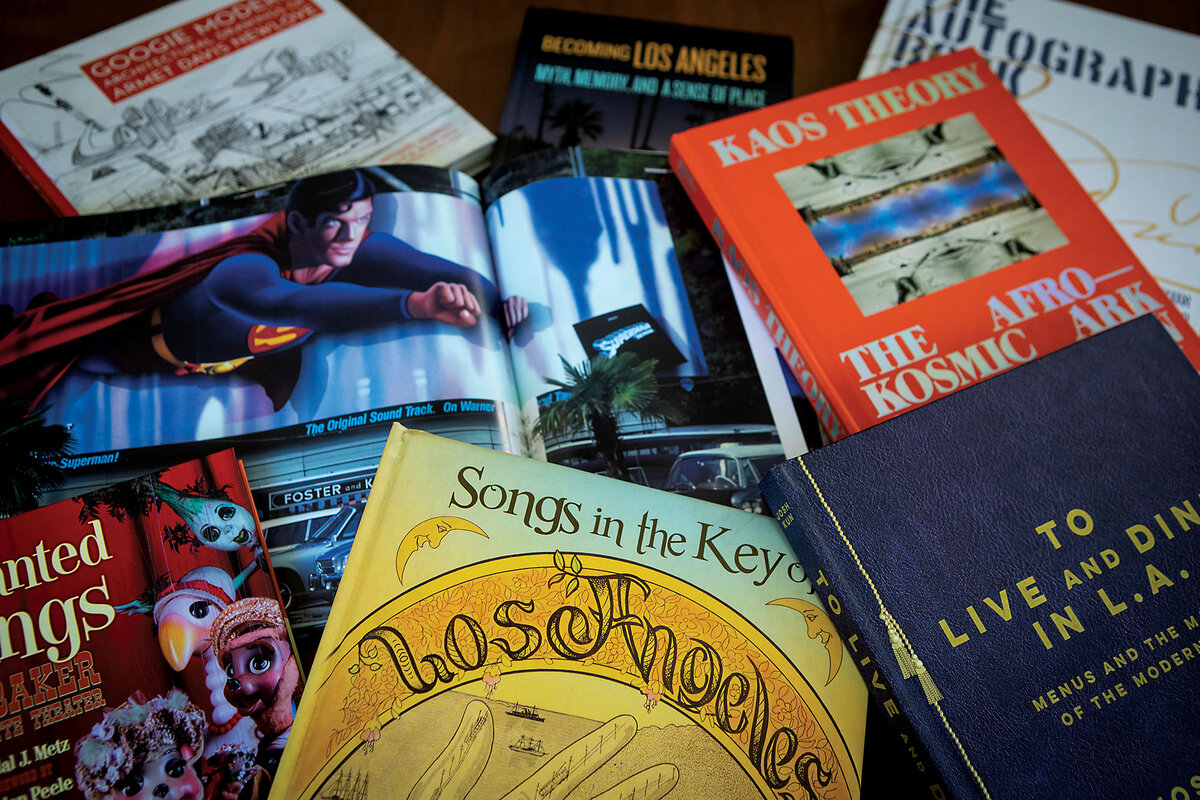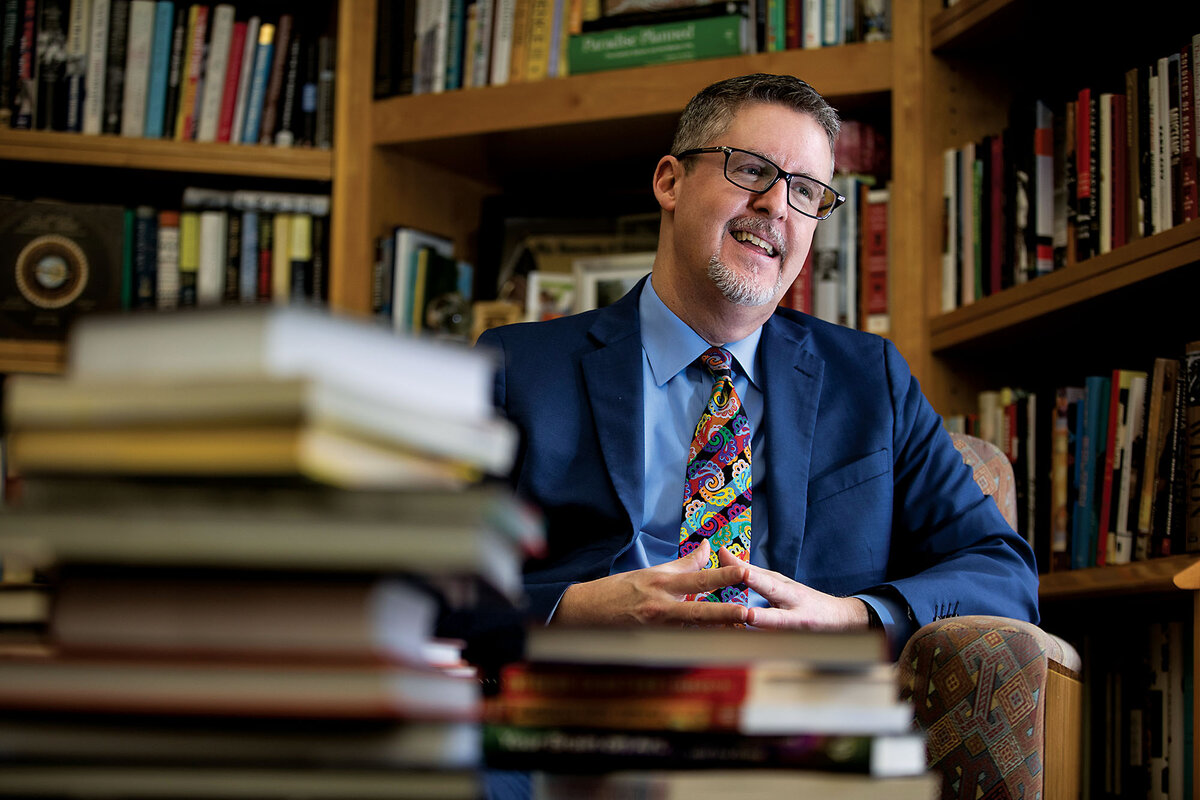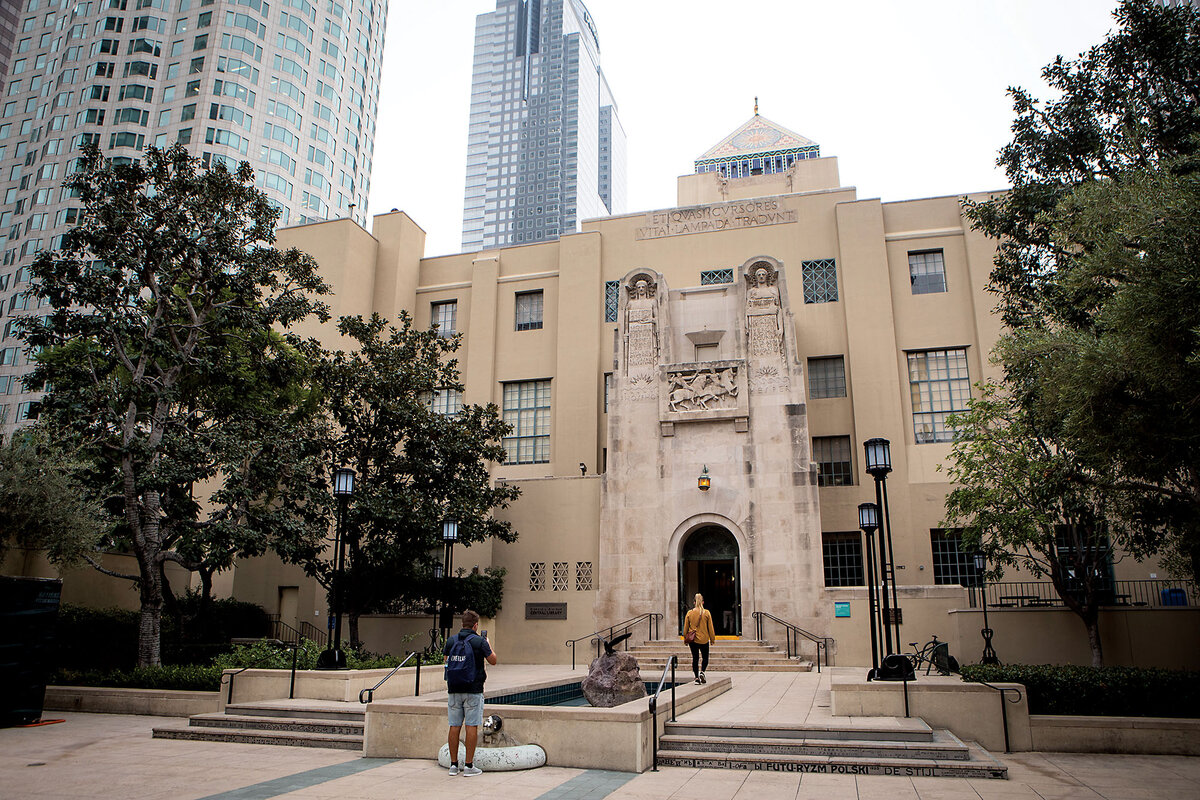An indie publisher finds its future – with a public library
Loading...
| Los Angeles
The City of Angels is known for glitz and glamour, palm trees, celebrity sightings, and fairy-tale fantasies. But Angelenos recognize a deeper creative spirit, found in its eclectic and diverse neighborhoods, where stories of resilience are illuminated with quirky, indelible characters.
“There’s something really valuable in trying to reflect a true portrait of the city, not just to the people who live here, but [to people] everywhere,” says Terri Accomazzo, editorial director for Angel City Press. “The city is so rich in diversity. It’s so rich in creativity and intelligence. And I just hate to see it pigeonholed the way that it is sometimes.”
For more than 30 years, the small independent Angel City Press has published nonfiction by local authors. Now, the company’s founders are handing it all over to the Los Angeles Public Library (LAPL) in an arrangement unprecedented in scope – forging what the city’s top librarian describes as a natural alliance. “The library is about collecting stories, we’re about preserving stories, and we’re certainly about telling stories,” says City Librarian John Szabo. “And that’s what Angel City Press has done.”
Why We Wrote This
Book publishing involves deciding what titles the public could and should be reading. In an unprecedented but natural alliance, a local press in Los Angeles will now be run by the city’s public library.
Shared mission
With e-books and self-publishing, getting a book to market has never been easier, says Andrea Fleck-Nisbet, CEO of the Independent Book Publishers Association. The hard part is connecting with an audience.
“By taking a small indie publisher and then being able to continue its life through a nonprofit like a library that’s already serving that market, you have that built-in community,” she says, adding that the partnership offers an exit strategy for publishers who want their mission sustained.
This alignment does just that. Angel City’s donation includes its catalog of published books – titles that might be retired if acquired by a company focused solely on profits, says Ms. Accomazzo, who will keep her position after the transition. It also ensures that the press “continues to operate with an eye toward storytelling and a focus on telling things that matter as opposed to just trying to make as much money as we possibly can.”
Local voices
One of those stories is “A Handful of Earth, A Handful of Sky: The World of Octavia E. Butler” by Lynell George, about the life of the celebrated science fiction writer. Ms. Butler, a Black woman, grew up poor in Pasadena during the 1950s and ’60s, finding refuge in her journals and sanctuary in the area’s libraries.
Ms. George, a well-published author, says Angel City’s local focus allows for a “much more rich conversation about shaping and sharing stories.” Publishers from outside California often want LA stories to fit a preconceived narrative, she says. But in working with local publishers, “you’re just writing about what you see, what you love, what you have complicated feelings about. You’re not writing in response or retort to ... a cliché.”
In “KAOS Theory: The Afrokosmic Ark of Ben Caldwell,” author Robeson Taj Frazier brings to life the far-reaching cultural impact of a multimedia arts pioneer. By tracing Mr. Caldwell’s journey from his childhood in the American Southwest to filmmaking at UCLA and the establishment of his media arts center in LA’s Leimert Park neighborhood, Dr. Frazier shines light on civil rights and the Black experience in America.
The self-described “latchkey kid” who spent much of his childhood in public libraries now runs the University of Southern California’s Institute for Diversity and Empowerment at Annenberg. Dr. Frazier says he’s excited about the evolving relationship between Angel City Press and the library.
“We need to covet not only the objects that are inside of these spaces, but the kinds of relationships and fellowship that both these spaces and the works inside of them help to foster,” he adds.
Largest public library to take on independent publishing
A handful of other libraries have their own publishing arms – the Library of Congress, for instance, and the New York Public Library – but those exist to promote the libraries’ own collections. LA’s is the largest public library to take on independent publishing.
The LAPL is the nation’s second-largest public library by population served, with the largest digital circulation – more than 10 million e-books, audio books, podcasts, and other electronic media. That kind of reach combined with publishing can have a profound impact, says Sonia Alcántara-Antoine, president of the Public Library Association. “We level the playing field,’’ she says. “No matter what ZIP code you live in and how much money you have in your pocket, you have access to all the rich resources and services that the public library provides.’’
The Angel City collaboration builds on an evolution of libraries as maker spaces, where anyone can access resources to build, fix, or create things. “This is very much part of where we are in libraries,’’ says Ms. Alcántara-Antoine, who heads Baltimore County Public Library, “which is not only providing access to content, but facilitating the creation of it.’’
Angel City’s deal with the city library also raises questions – about politics, editorial independence, and best use of public resources. A library spokesperson says operating the press is expected to cost between $300,000 and $500,000 annually, with revenue helping to offset expenses.
LA’s chief librarian is focused on the opportunities it presents. Mr. Szabo points to e-books, audio books, and children’s books as areas of potential growth – in a city built on imagination. “LA is just this place of possibility,” he says. Angel City’s 135-plus titles are eclectic, diverse, weird, fun, and beautiful, says Mr. Szabo. As the library picks up that mantle, “it’s about telling stories that might not otherwise be told.”








